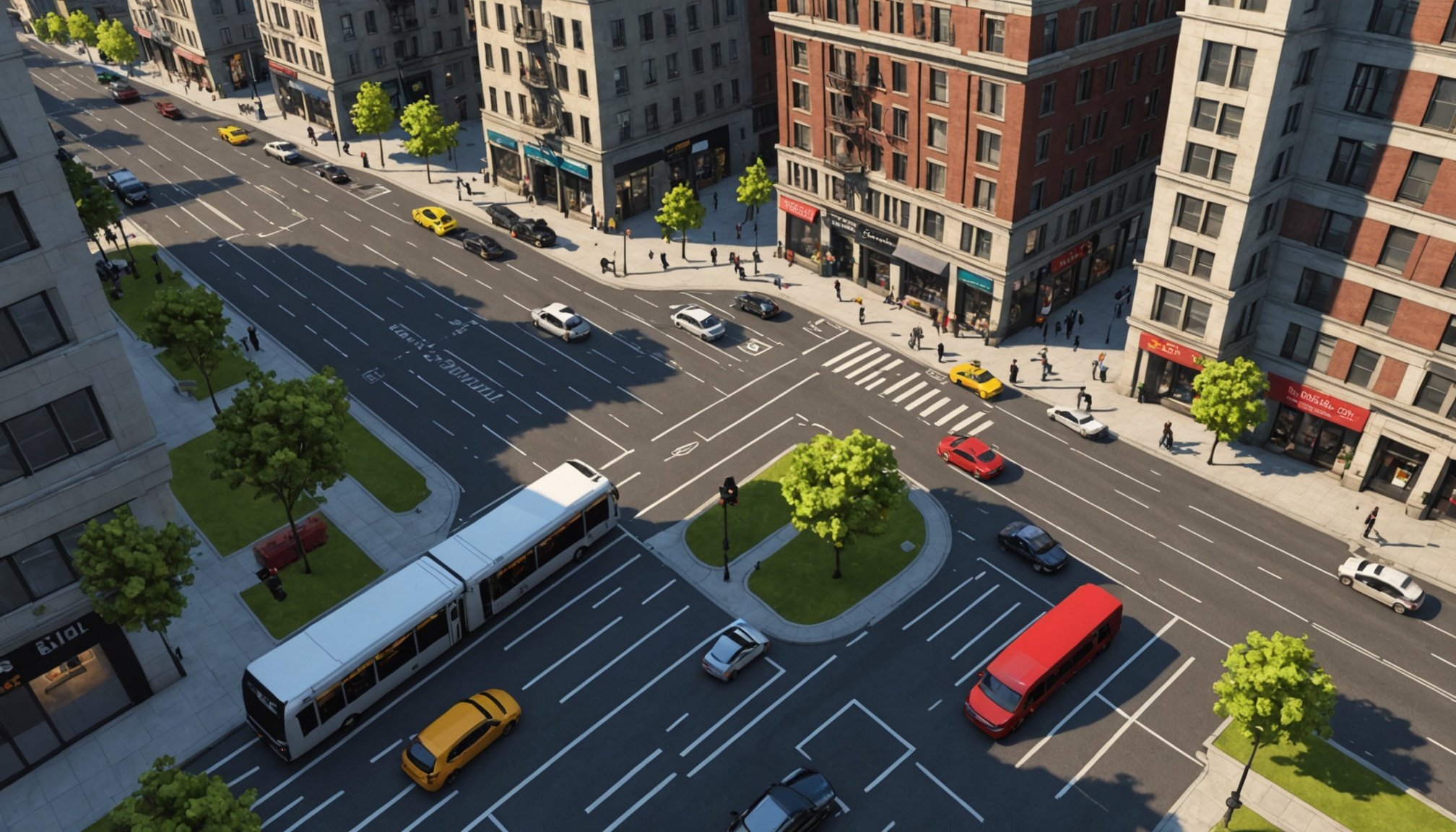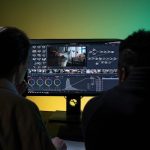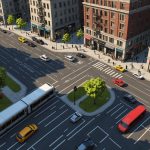Unlocking Authentic Traffic Dynamics in Urban Sim Games: Expert Tips for Realistic City Simulations
When it comes to urban simulation games, one of the most critical aspects that can make or break the gaming experience is the authenticity of traffic dynamics. Whether you’re a seasoned gamer or a newcomer to the world of city simulations, understanding and mastering traffic management can elevate your gameplay to a whole new level. Here’s a comprehensive guide on how to achieve realistic traffic simulations in urban games, complete with expert tips, practical advice, and real-world examples.
Understanding the Basics of Traffic Simulation
Before diving into the intricacies of traffic simulation, it’s essential to grasp the fundamental principles that make traffic in urban games feel real.
Also read : Mastering Realism: Enhancing Space Simulation Games with Genuine Physics Integration
Real-World Data and Traffic Patterns
Realistic traffic simulations often rely on real-world data and traffic patterns. Games like “Mini Motorways” use dynamic city maps inspired by real cities around the world, which helps in creating authentic traffic flow scenarios[3].
"Mini Motorways is a game about drawing the roads that drive a growing city. Build a road network, one road at a time, to create a bustling metropolis."
- Data Analysis: Analyzing real-world traffic data can help game developers create more realistic traffic patterns. This involves studying peak hours, traffic congestion points, and the flow of traffic through different parts of the city.
- Traffic Patterns: Understanding how traffic moves in real cities is crucial. For example, rush hour traffic tends to be heavier in certain areas, and this can be replicated in the game to make it more realistic.
Digital Twins and Smart Cities
The concept of digital twins, where a virtual replica of a real city is created, can significantly enhance traffic simulations. Digital twins allow for real-time data integration, making the simulation more dynamic and responsive to real-world conditions.
Topic to read : Accelerating Authenticity: The Impact of Real-Time Ray Tracing on Racing Game Reflections
| Feature | Description | Example Game |
|---|---|---|
| Digital Twins | Virtual replica of a real city | Cities: Skylines |
| Real-Time Data | Integration of real-time traffic data | Mini Motorways |
| Smart Cities | Simulation of intelligent urban infrastructure | SimCity |
Mastering Traffic Management in Urban Games
Effective traffic management is the heart of any urban simulation game. Here are some expert tips to help you master this aspect:
Building Efficient Road Networks
In games like “Mini Motorways,” the key to keeping traffic flowing is to build an efficient road network. Here are some tips:
- Plan Ahead: Anticipate where traffic will be heaviest and plan your road network accordingly. Highways, roundabouts, and intersections should be strategically placed to minimize congestion.
- Upgrade Wisely: Choose upgrades that meet the demands of your growing city. For instance, adding highways or improving public transport can significantly reduce traffic congestion[3].
Managing Traffic Flow in Real Time
Real-time traffic management is essential for creating a dynamic and realistic gaming experience.
- Monitor Traffic Patterns: Keep an eye on how traffic is moving in your city. Identify bottlenecks and adjust your road network or traffic management strategies accordingly.
- Use Traffic Signals: Implementing traffic signals and managing their timing can help regulate the flow of traffic and reduce congestion.
Public Transport and Traffic Simulation
Public transport plays a crucial role in urban traffic simulations. Here’s how you can integrate it effectively:
- Public Transport Options: Include a variety of public transport options like buses, trains, and subways. This can help distribute traffic more evenly and reduce congestion on the roads.
- Route Planning: Plan public transport routes that cover key areas of the city, ensuring that commuters have efficient ways to travel without relying solely on personal vehicles.
Enhancing Realism with Advanced Features
To make your traffic simulations even more realistic, consider incorporating advanced features that mimic real-world urban planning and traffic management.
Urban Planning and City Building
Games like “Cities: Skylines” offer deep urban planning mechanics that allow players to build and manage cities with realistic traffic dynamics.
- Zoning and Land Use: Implement zoning laws and land use policies to control where different types of buildings and infrastructure are placed. This can help in managing traffic by ensuring that residential, commercial, and industrial areas are well-separated.
- Green Spaces and Pedestrian Areas: Including green spaces and pedestrian areas can reduce traffic by providing alternative modes of transport and making the city more livable.
Virtual Reality and Immersive Experiences
Virtual reality (VR) can take traffic simulations to a new level by providing an immersive experience.
- VR Integration: Games that support VR allow players to experience the city from a first-person perspective, making the traffic simulation feel more real and engaging.
- Interactive Elements: Include interactive elements like traffic cameras, sensors, and real-time data feeds to enhance the realism of the simulation.
Practical Tips for Players
Here are some practical tips for players looking to improve their traffic management skills in urban simulation games:
Start Small and Scale Up
- Begin with a small city and gradually expand as you gain experience. This helps in understanding how different elements of traffic management interact.
- Incremental Upgrades: Upgrade your infrastructure incrementally, focusing on high-impact changes that improve traffic flow.
Use Game Modes Wisely
- Endless Mode: Use endless mode to practice and refine your traffic management skills without the pressure of a time limit.
- Expert Mode: Once you’re confident, switch to expert mode for a more challenging experience that requires precise decision-making and strategic planning[3].
Analyze and Adjust
- Data Analysis: Use in-game data to analyze traffic patterns and identify areas for improvement.
- Adjust Strategies: Be willing to adjust your strategies based on the data. For example, if a particular intersection is always congested, consider adding a roundabout or improving the traffic signal timing.
Creating authentic traffic dynamics in urban simulation games is a complex but rewarding task. By leveraging real-world data, digital twins, and advanced urban planning features, game developers can craft simulations that feel incredibly realistic. For players, mastering traffic management involves a combination of strategic planning, real-time decision making, and continuous improvement.
Whether you’re building a road network in “Mini Motorways” or managing a sprawling metropolis in “Cities: Skylines,” the key to success lies in understanding and replicating the complexities of real-world traffic. So, the next time you dive into an urban simulation game, remember that the art of traffic management is not just about building roads, but about creating a living, breathing city that pulses with the rhythm of real traffic.
Additional Resources
For those looking to delve deeper into the world of urban simulations and traffic management, here are some additional resources:
- Research Papers: Studies on procedural techniques for city generation can provide insights into how cities are simulated in games[2].
- Community Forums: Joining community forums and discussion groups can offer valuable tips and strategies from experienced players.
- Tutorials and Guides: Online tutorials and guides can help you master specific aspects of traffic management in different games.
By combining these resources with the tips and strategies outlined above, you’ll be well on your way to becoming a master of urban traffic simulations.











